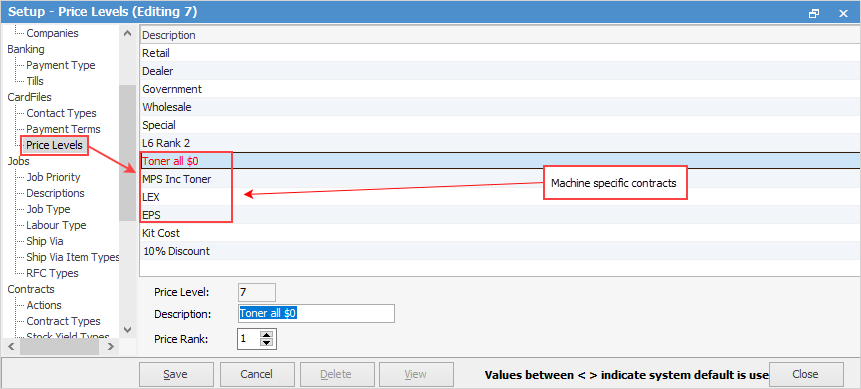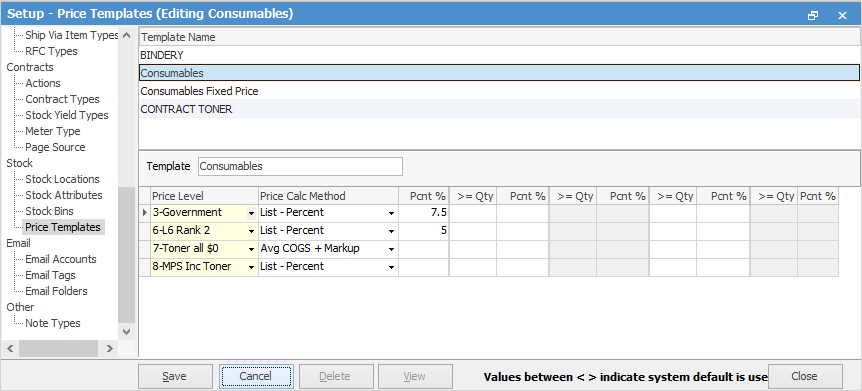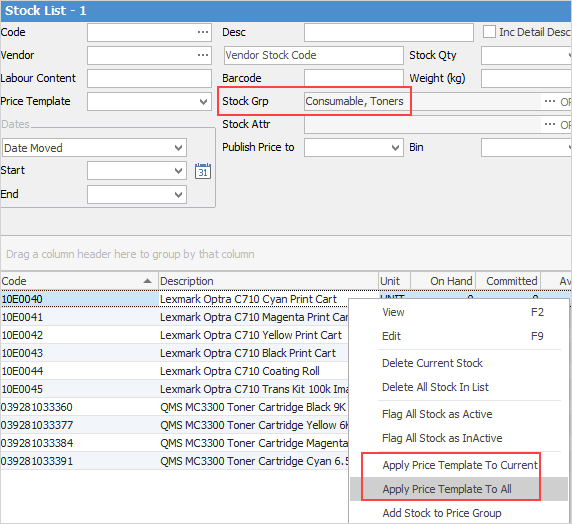Price Level is used to drive pricing against a contract other than meter billing. A price level would typically be set up for each contract type. For example, a price level of Toner all $0 means that the contract gets both black and colour toner at $0.00, and a price level of Rental will cover rental meters to allow information to flow through to jobs correctly.
This provides an easy way to set up stock pricing for contracts, and is made even easier by using price templates.
Any job created from a contract will use the contract's price level:

If no pricing is available for that price level, Jim2 will use the customer's price level, as set up on their cardfile. Therefore, in the example above (Toner all $0), toners and consumables would have this price level, but paper, staples etc. would not, and would be billed at the customer's normal price.
 |
Note: Contract prices will override any other price level when used within the contract. |
Price Levels identify the type of contract that an Asset is on, and automatically apply the contract-specific price for stock on a contract-related job.
Typically, price level setup for a Managed Print Services business would comprise at least one (probably several) non-contract general sales price levels, usually starting with 1-Retail (the highest price that stock would be sold for).
On the ribbon, go to Tools > Setups > CardFiles > Price Levels and set up according to the contracts established.

See here for detailed information on Price Rank. |
Price templates are a way of globally applying a price structure to a group of products. Although a price matrix can be built on each individual product, the nature of the price structure of stock in a Managed Print Service business lends itself to price templates. 1.On the ribbon go to Tools > Setups > Stock > Price Templates and add the price templates according to the product group structure that will be used on contracts.  Typically, there will be a template for each group of stock that has a common selling price (note that $0.00 is a selling price) and means of calculating that selling price for a contract (price level). Note that the Fixed Price and Price Level methods cannot be used, as the method must be dynamic. The example below is for contract toner that has all the price calculations based on the list price. If the list price was $100.00, for example, the resultant prices would be:
 The second example is more complex in that it allows quantity discount and a mix of calculation methods:  2.Once templates are set up, create a stock list for the stock to use in these templates. Right click and select Apply Price Template To either the currently highlighted stock or all stock in the list.  |
Further information
